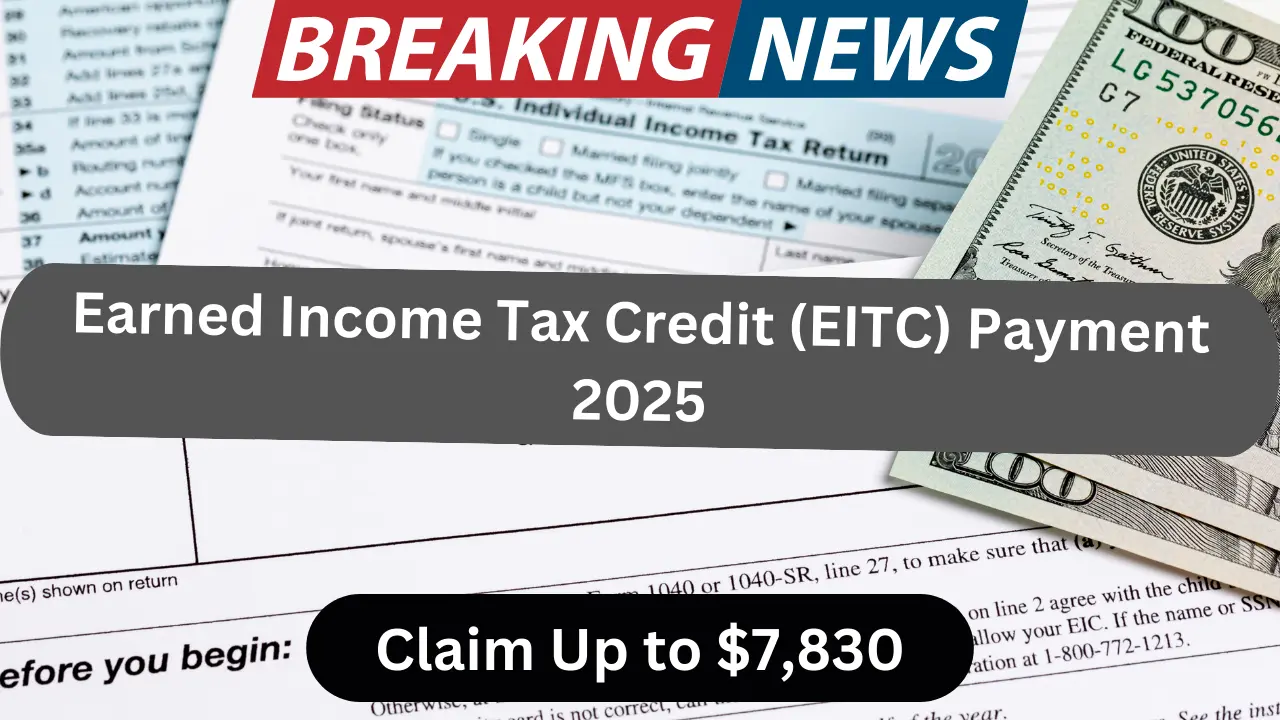Earned Income Tax Credit (EITC) Payment 2025:- For working families with low to moderate incomes, the Earned Income Tax Credit (EITC) is a vital tax break. Even in 2024, this credit helped many Americans by reducing their tax liabilities and sometimes even providing a refund.
As we move into 2025, it’s important to understand the latest updates on the EITC, including new awareness initiatives by the IRS, eligibility requirements, payment dates, and how to maximize your credit.
What is the EITC and Why Is It Important?
The EITC is a refundable tax credit aimed at supporting working individuals and families with low to moderate incomes. It not only lowers the amount of tax you owe but can also result in a refund if your credit exceeds your tax liability. Introduced in 1975, the EITC has lifted millions out of poverty by encouraging work and supplementing income.
In 2025, the IRS continues its national EITC Awareness Day campaign, celebrating the 50th anniversary of the credit. Despite its long history, studies show that about one in five eligible taxpayers still miss out on claiming this valuable benefit.
Maximum Credit Amounts for 2024 (Updated for 2025 Filers)
The maximum EITC amounts vary based on your filing status and the number of qualifying children you have. The following table summarizes the limits for tax year 2024, which will generally apply to early 2025 filers:
| Number of Dependents | Maximum Income (Single Filer) | Maximum Income (Married Filing Jointly) | Maximum Credit Amount |
| No children | $18,591 | $25,511 | Up to $632 |
| 1 child | $49,084 | $56,004 | Up to ~$2,700* |
| 2 children | $55,768 | $62,688 | Up to ~$5,500* |
| 3 or more children | $59,899 | $66,819 | Up to ~$7,830* |
*Note: These amounts are approximate and can vary based on other factors like investment income (limit: $11,600).

Eligibility Required For EITC 2025 Payment
To claim the EITC in 2025, you must meet several criteria:
- Earned Income:
You must have income from working. This includes wages, salaries, tips, and income from self-employment. (Income from the gig economy and freelance work also qualifies.) - Adjusted Gross Income (AGI) Limits:
Your AGI must be below the limits outlined above, which vary by filing status and number of dependents. - Filing Requirements:
- You must be a U.S. citizen or resident alien for the entire year.
- You need a valid Social Security number for yourself, and if filing jointly, for your spouse and any qualifying dependents.
- You must file a tax return, even if your income is low enough that you aren’t normally required to file.
- Other Conditions:
- Special rules apply for military personnel, clergy, and taxpayers with disabilities.
- Workers with no dependents between the ages of 25 and 64 may receive a smaller credit.
For detailed eligibility, you can use the IRS EITC Assistant tool online.
How to Claim the EITC Payment for 2025
Claiming the EITC is straightforward:
- File Your Tax Return:
Use IRS Free File or a reputable tax preparation service to complete and e-file your Form 1040. - Include All Required Documents:
Gather your W-2 forms, 1099s, and any documents showing childcare expenses or other eligible costs. - Use Available Resources:
The IRS provides tools and guidance (including the Interactive Tax Assistant and EITC Assistant) to help you determine your eligibility and calculate your credit. - Choose Direct Deposit:
For faster refunds, opt for direct deposit when filing your return.
Additional Updates for 2025 Filers
- EITC Awareness Day:
On January 31, 2025, the IRS and its national partners celebrated the 50th anniversary of the EITC, highlighting its importance in supporting working families. This campaign aims to ensure that more eligible taxpayers claim their credit. - Duplicate Dependent Returns:
For the first time, the IRS will accept e-filed returns with duplicate dependent claims if the second return includes a valid Identity Protection PIN (IP PIN). This change is expected to speed up refunds. - Refund Timing:
The “Where’s My Refund?” tool will update projected deposit dates by February 22, 2025. Most refunds should appear by March 3 if there are no issues and you’ve chosen direct deposit.
How to Maximize Your EITC Payment for 2025
- Keep Detailed Records:
Maintain accurate records of your income, childcare expenses, and other qualifying costs. This ensures you claim the full credit you’re entitled to. - File Early:
Filing your tax return as soon as possible increases your chances of receiving your refund quickly. - Utilize Free Resources:
Take advantage of IRS Free File, Volunteer Income Tax Assistance (VITA), and Tax Counseling for the Elderly (TCE) services if you need help preparing your return. - Check Eligibility for Other Credits:
Besides the EITC, you may also be eligible for the Child Tax Credit (CTC) or the Credit for Other Dependents (ODC).
FAQs About Earned Income Tax Credit 2025
1. Who can claim the EITC?
You can claim the EITC if you have earned income, meet the AGI limits, and file a tax return with a valid Social Security number. Special rules apply for those with qualifying children.
2. What is earned income?
Earned income includes wages, salaries, tips, and income from self-employment. It does not include investment income, pensions, or unemployment benefits.
3. How do I check if I qualify for the EITC?
Use the IRS EITC Assistant tool online to see if you meet the eligibility criteria and to estimate your credit amount.
4. How and when will I receive my refund?
The fastest way to get your refund is by e-filing your tax return and choosing direct deposit. Most refunds are expected to be in your bank account by early March 2025.
5. What should I do if I have questions about my eligibility?
Consult a tax professional or use the free assistance provided by IRS programs like VITA and TCE.
Conclusion
The EITC remains a vital lifeline for millions of working families by reducing tax burdens and providing additional income. In 2025, staying informed about the updated eligibility criteria, income limits, and claiming process is crucial for maximizing your benefit.
| Homepage | uhmychart.org |
With ongoing IRS campaigns and improvements to filing procedures, more taxpayers have the opportunity to claim the credit and boost their financial stability.






